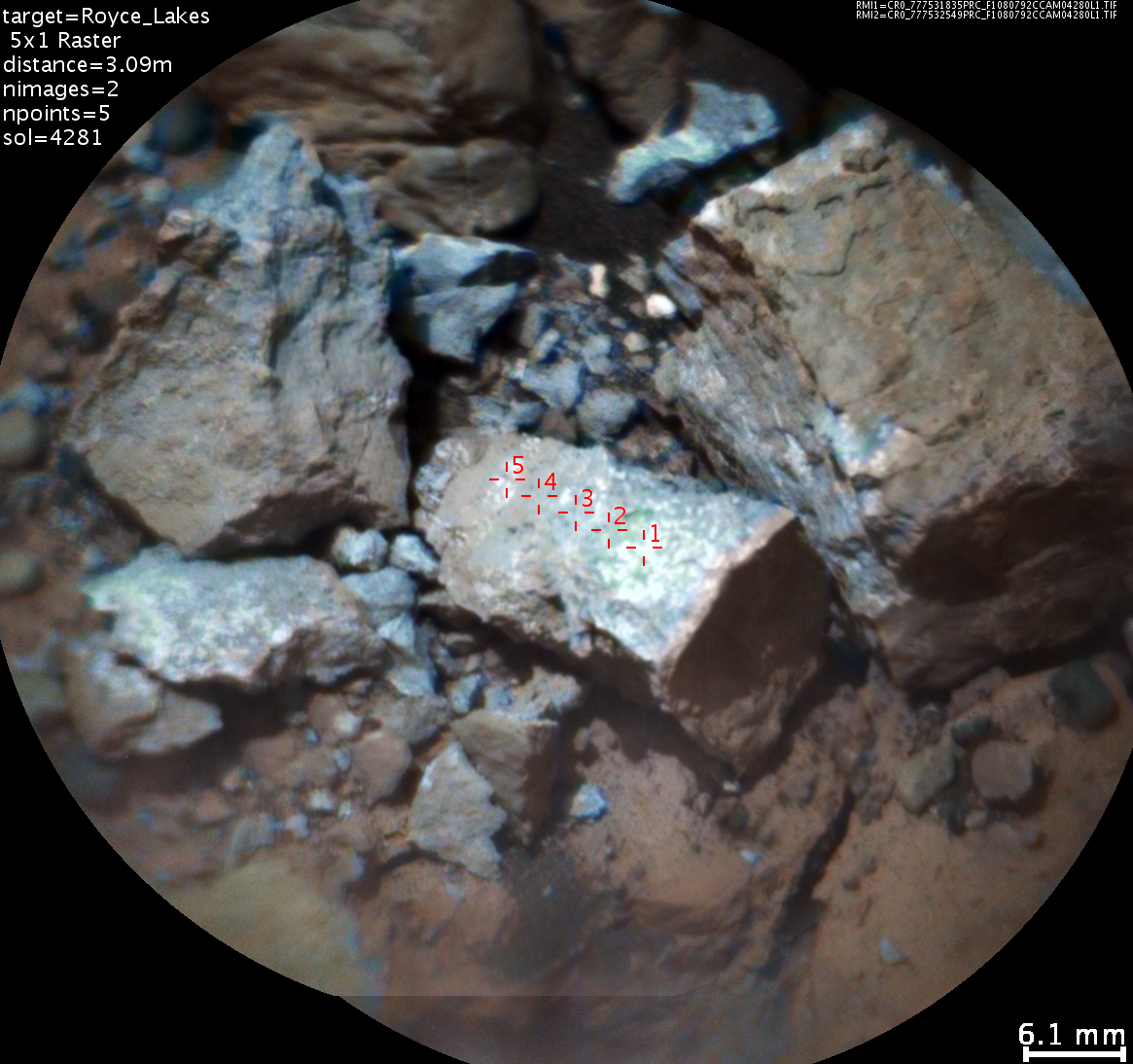Chemcam makes its one millionth laser shot on Mars
On August 21, the Thales Chemcam laser fired its one millionth shot at Mars. This shot, fired on Sol 4281, the 4,281th Martian day of the mission, is a major milestone in an extraordinary technological adventure.
The target of this millionth shot was a fragment of rock, called Royce Lakes, which was broken by the rover itself when it rolled over it. The whitish interior of the rock, contrasting with the orange-red appearance of the Martian surface, immediately caught the eye of the scientists.
The Chemcam laser is the Franco-American instrument on board NASA's Curiosity rover. Its mission is to measure the chemical composition of Mars and take images of the rocks and soil on the surface of the planet.
Until the arrival of the SuperCam laser in February 2021 on NASA's Perseverance rover, ChemCam was the most powerful laser to operate on the surface of an extra-terrestrial planet. Both lasers were built by Thales teams in France, under CNES (Centre National d’Etudes Spatiales) project management.
An extraordinary technological adventure
“Chemcam was designed to operate for two years, and it has now been in operation for twelve years”, explained Eric Durand, head of the ChemCam and SuperCam laser programmes at Thales. “This longevity is a real source of pride for the Group's teams, and this millionth shot represents a major symbolic milestone for this extraordinary technological adventure”.
“Our strength lies in the international, technical and scientific collaboration around this project. The contribution of this new analysis method on Mars has opened up a new field of study, involving the study of rocks at grain scale”, emphasised Olivier Gasnault, CNRS and IRAP research fellow and co-leader of ChemCam.
ChemCam is under the joint scientific responsibility of the Los Alamos National Laboratory (LANL) in New Mexico (USA) and the Institut de Recherche en Astrophysique et Planétologie (IRAP) at the Observatoire Midi-Pyrénées in Toulouse. CNES is playing a major role in its operational and technical operation, in conjunction with the US Jet Propulsion Laboratory (JPL) and research laboratories on both sides of the Atlantic.


Find out more

